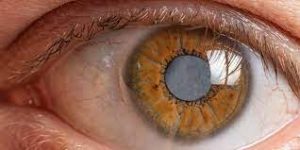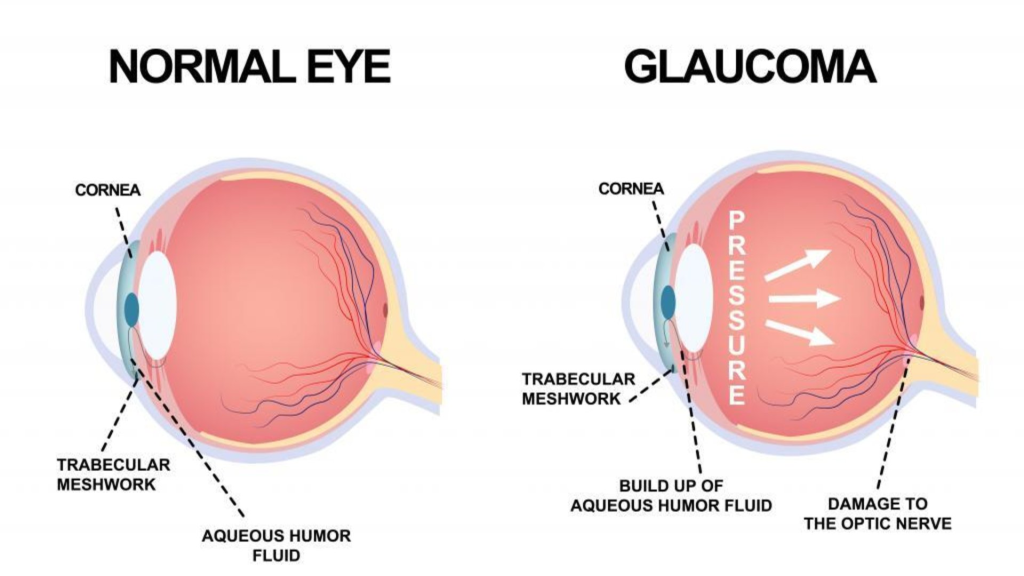Glaucoma
OVERVIEW
- Early Symptoms: Often none
- Later Symptoms: Loss of side (peripheral) vision, blind spots, blindness
- Diagnosis: Dilated eye exam with visual field testing
- Treatment: Medicine (usually eye drops), laser treatment, surgery

WHAT IS GLAUCOMA?
Glaucoma is a group of eye diseases that can cause vision loss and blindness by damaging a nerve in the back of your eye called the optic nerve.
The symptoms can start so slowly that you may not notice them. The only way to find out if you have glaucoma is to get a comprehensive dilated eye exam.
There’s no cure for glaucoma, but early treatment can often stop the damage and protect your vision.
CAUSES
Scientists aren’t sure what causes the most common types of glaucoma, but many people with glaucoma have high eye pressure — and treatments that lower eye pressure help to slow the disease.
There’s no way to prevent glaucoma. That’s why eye exams are so important — so you and your doctor can find it before it affects your vision.

SYMPTOMS
- Double vision
- Hazy vision
- Seeing a glare or halo around bright lights
- Squinting
- Headaches
- Eye strain (when your eyes feel tired or sore)
- Trouble focusing when reading or looking at a computer
Some people may not notice the symptoms of refractive errors. It’s important to get eye exams regularly — so your eye doctor can make sure you’re seeing as clearly as possible.
If you wear glasses or contact lenses and still have these symptoms, you might need a new prescription. Talk to your eye doctor and get an eye exam if you are having trouble with your vision.
TYPES
Open Angle Glaucoma
Open-angle glaucoma is the most predominant type, varying from 1.26 – 4.32% of the Indian subcontinent. Many people don’t have any symptoms until they start to lose their vision, and people may not notice vision loss right away.
Experts aren’t sure what causes open-angle glaucoma, but it may be caused by pressure building up in your eye. If the fluid in your eye can’t drain fast enough, it creates pressure that pushes on the optic nerve in the back of your eye.
Over time, the pressure damages the optic nerve, which affects your vision. This can eventually lead to blindness. People with high blood pressure or diabetes are at higher risk for this type.
Normal Tension Glaucoma
Normal-tension glaucoma is a type of open-angle glaucoma that happens in people with normal eye pressure.
You may be at higher risk for normal-tension glaucoma if you:
- Are of Japanese ancestry
- Have a family history of normal-tension glaucoma
- Have had certain heart problems, like an irregular heartbeat
- Have low blood pressure
Experts don’t know what causes normal-tension glaucoma, but research shows that treatments that lower eye pressure can help slow the disease and stop vision loss.
Angle Closure Glaucoma
Also called narrow-angle or acute glaucoma, it’s a medical emergency. Go to the doctor or emergency room immediately if you suddenly have:
- Intense eye pain
- Upset stomach (nausea)
- Red eye
- Blurry vision
In this type of glaucoma, the outer edge of the iris (the colored part of your eye) blocks fluid from draining out of the front of the eye. The fluid builds up quickly, causing a sudden increase in eye pressure. If it’s not treated, angle-closure glaucoma can cause blindness in just a few days.
A doctor can use laser treatment and give you medicine to help the fluid drain. This can lower eye pressure and protect your vision. Your doctor might treat both eyes to prevent future problems, even if you only have angle-closure glaucoma in 1 eye.
Another type of angle-closure glaucoma, sometimes called slow or chronic angle-closure glaucoma, happens more slowly and might not have any symptoms. Your doctor can treat this type with medicines, laser treatments, or surgery.
Congenital Glaucoma
Babies are born with a problem in their eye that keeps fluid from draining normally. Congenital glaucoma is rare — only about 1 in 10,000 babies born in the United States have it.
If your child is born with glaucoma, you can usually notice the signs right away. Children with congenital glaucoma:
- Have cloudy eyes
- Are sensitive to light
- Make extra tears
- May have eyes that are larger than normal
Surgery works very well to treat congenital glaucoma. If babies get surgery early enough, they usually won’t have any permanent vision loss.
Several other types of glaucoma can also develop in children. Any glaucoma that affects babies or children is called pediatric glaucoma.
